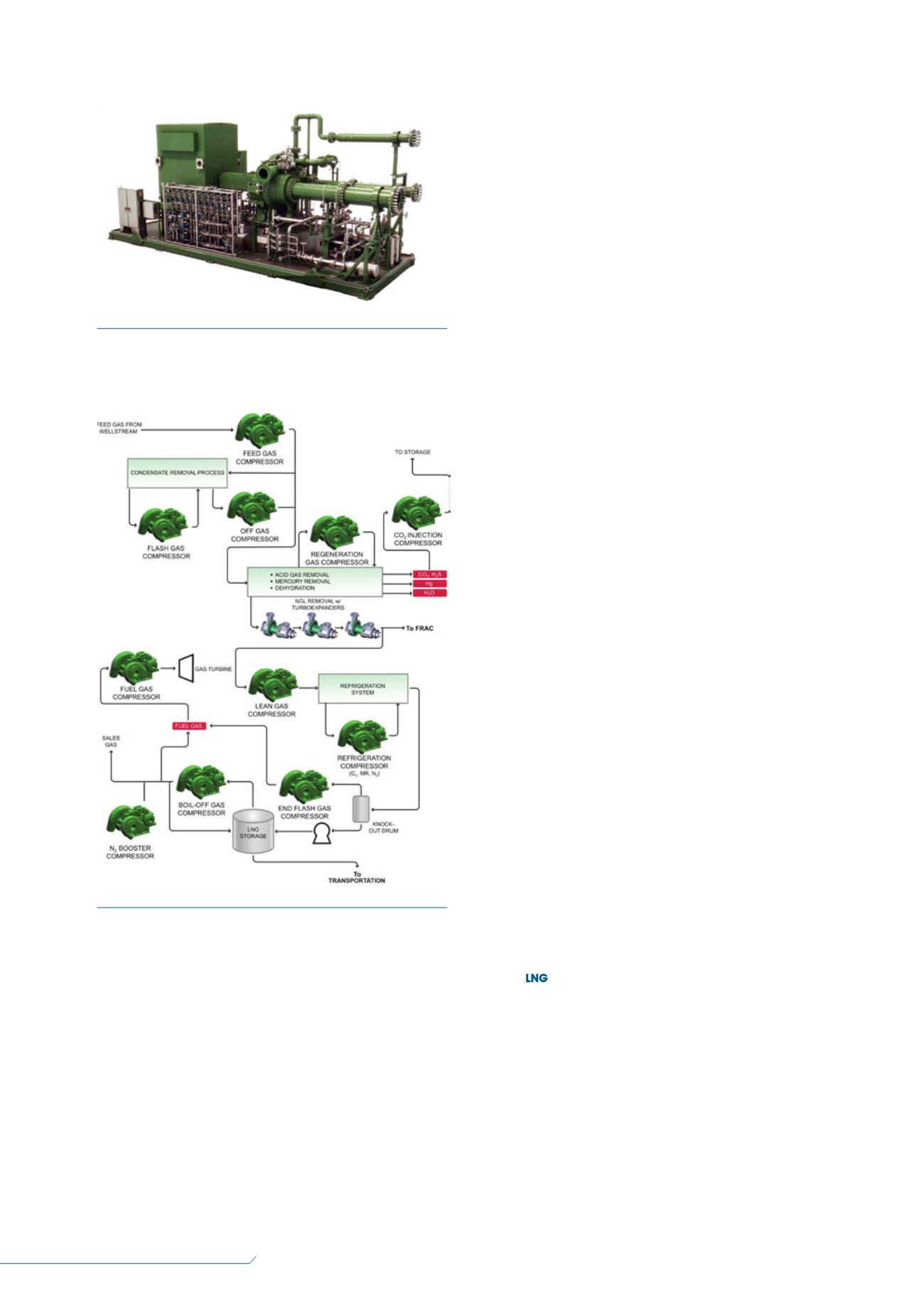
46
LNG
INDUSTRY
APRIL
2016
scope, the contract required integrated API 617/614
features, including an on-skid lubrication system, which
fed the compressor and main drive motor, tandem
dry-face seals, the seal support system, and a custom
integrated control system.
The integrated seal support system was fully
engineered and fabricated in-house by the compressor
OEM. This integration of the seal support system
included complete tubing to and from the dry-face seals
prior to shipment. By having the OEM both design and
supply the seal support system, potential field fit-up
issues were eliminated along with the potential for site
work delays associated with the seal system. Figure 1
depicts an integrated skid design for a typical MR
IGC compressor. Based on the client’s requirements for
minimising the assembly work in the field, the
compressor core unit, lubrication arrangement, seal
support system, instrumentation rack, and
customer-supplied controller were all integrated on a
common base, and were able to ship in place for ease of
transportation and installation. It was estimated at the
time of shipment that the total commissioning time for
the skids would be reduced by 30 – 40% compared to
an arrangement fully erected at site.
LNG applications
It is important to note that IGC compressors have been
increasingly selected by LNG engineering, procurement
and construction (EPC) contractors and end-users for
their flexibility in design, reliability, efficiency, and
expedited delivery. Since the completion of this project,
IGC compressors have continued to gain on alternative
technology in this growth space. Subsequently,
portfolios continue to expand with players specifically
developing products that can handle more flow,
increased power, and higher pressure, and that fit into
new applications and can be easily mobilised. Within the
liquefaction process, there are a variety of compressor
applications in which IGC compressors are a good fit
(Figure 2).
A bright future
The authors expect application-specific compressor
offerings to continue to mature and evolve, in line with
the small scale LNG market. Some of the expected
developments include additional standardisation in
OEM product offerings for various applications, modular
designs for ease of transportation and installation, and
partnerships with EPCs to align OEM products with
standardised plant offerings.
The number of successful plants utilising
IGC compressors for MR applications continues to
increase at an accelerating pace due to the reliability
and wide market acceptance that the technology offers.
This successful project is yet another example of how
IGC compressor OEMs are leading the industry towards
a faster, more efficient and ultimately more profitable
way to engineer, design and operate small scale LNG
plants.
References
1. BEATY, P. J., EISELE, K., MACEYKA., T. D., and
SCHWARZ, C. ‘Integrally Geared API 617 Process
Gas Compressors’, paper presented at the 29
th
Turbomachinery Symposium, (September 2000),
Houston, Texas, US.
2. BLOCH, H. P. and GEITNER, F. K., ‘Use Equipment
Failure Statistics Properly’,
Hydrocarbon Processing
,
(January 1999), pp. 49
–
53.
3. GRABAU, D., ‘Use Integrally Geared Compressors
for Small-Scale LNG’,
Hydrocarbon Processing
,
(October 2013), pp. 25
–
28.
Figure 1.
A three-stage MSG
®
-8 integrally geared centrifugal
(IGC) compressor serves the main cryogenic heat exchanger
refrigeration loop in a liquefaction process.
Figure 2.
A simplified diagram of the liquefaction process,
demonstrating potential applications for IGC compressors.


